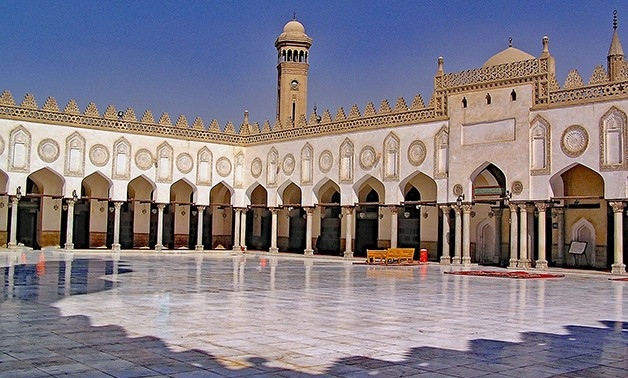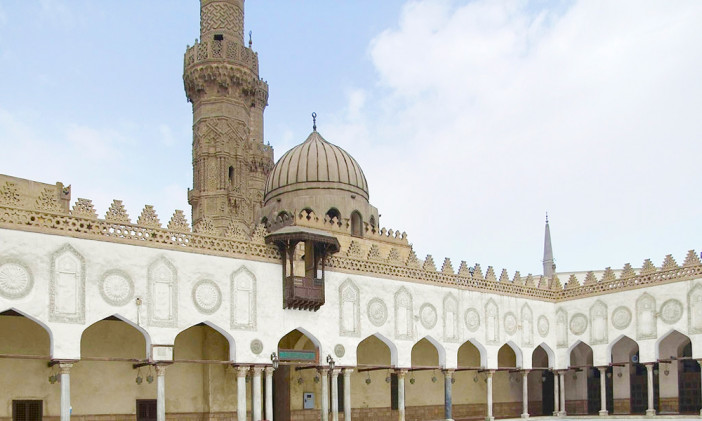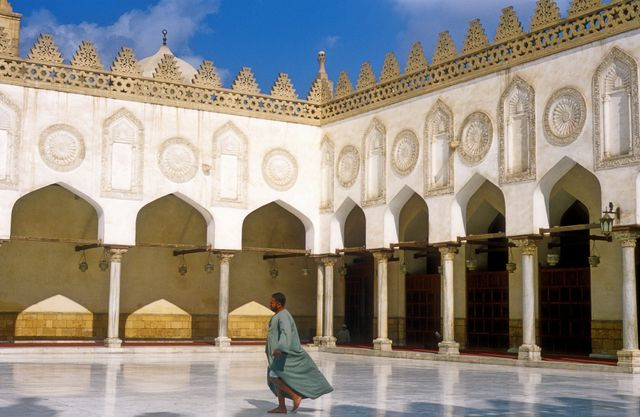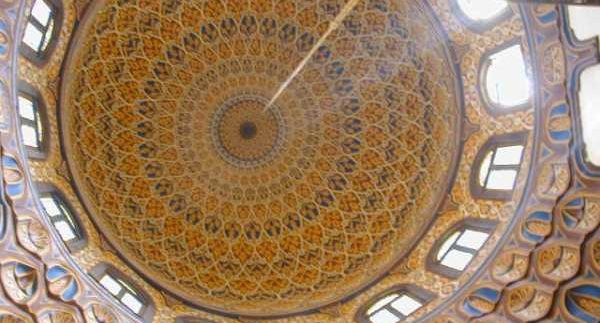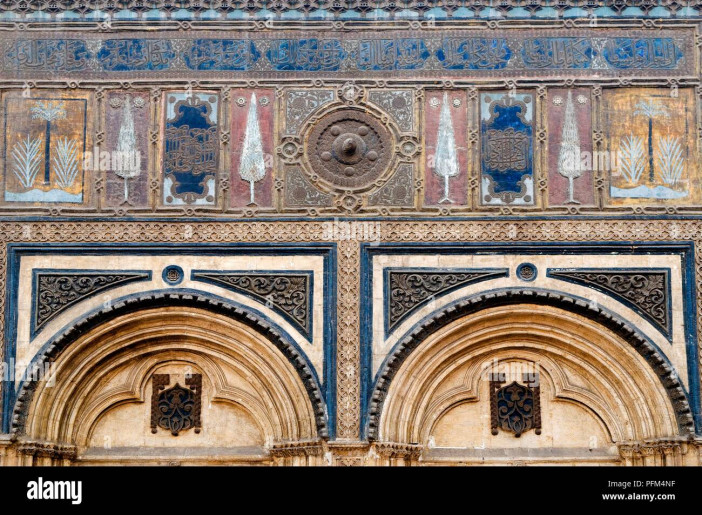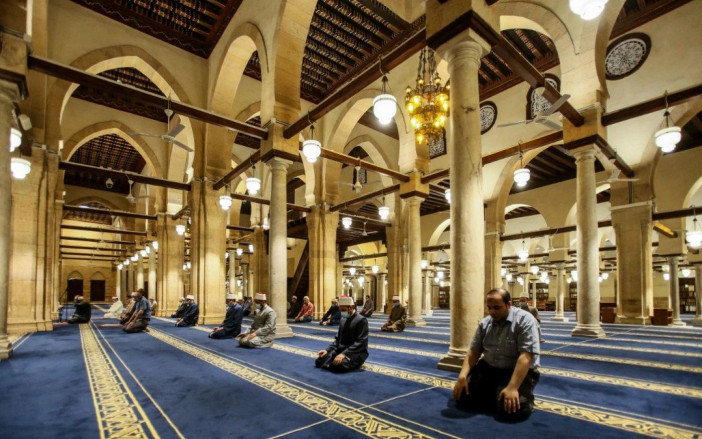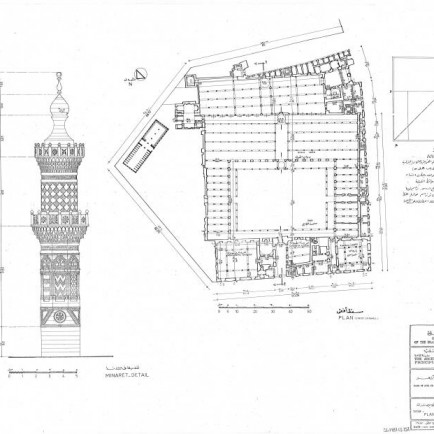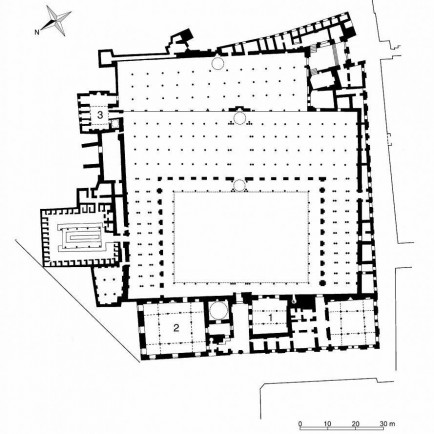Mosque of al-Azhar
History
As soon as he arrived in Egypt, Jawhar ben Abdalah al-Siqilli, the general who had just conquered the country in 969, for the fourth Fatimid Caliph Al-Muizz li-Din Allah, began the construction of a new capital. Al-Mansuriyyah, north of Al-Fustat, the ancient jewel of the Abbasid Empire. When Al-Muizz went there to visit his new conquest, he decided that the capital would be called Al-Qahirah (the "victor", now Cairo) instead of Al-Mansūriyyah.
Urban and Architectural
The Al-Azhar Mosque was the first architectural work established by the Fatimides in Egypt and the first mosque established in the city of Cairo. It was known from its beginnings as the Mosque of Cairo, and this name remained for most of the Fatimid government, then this name disappeared and the name of Al-Azhar took over the mosque, and this name remained to this day, and it has become one of the most famous Islamic institutions.
Al Azhar Mosque is one of the amazing mosques and things to do in Cairo, it is considered the first university in history built more than thousand years ago in Cairo, people visiting Khan El Khalili can see the mosque during their one-day visits to Cairo. It was in the late 10th century to be the official mosque for congregational prayers held every Friday and is known in a rabic as Jummah.
The promoter of the fascinating Al Azhar Mosque which is as old as the city of Cairo itself is also the great leader of the Fatimid army and the builder of Cairo, Gawhar El Seqelly, under the orders of the Fatimid Caliph, Al Mui'z the Din Allah. The building of Al Azhar, which must be seen on regular trips to Egypt or day trips to Cairo from the airport, began in 970 AD and took around three years to complete.
Description
Architect General Jawhar al-Saqalli who conquered Egypt in AH 358 / AD 969 supervised the construction.
References
https://islamicart.museumwnf.org/database_item.php?id=monument;ISL;eg;Mon01;3;en
https://www.cairotoptours.com/fr/Guide-de-voyage-en-Egypte/Guide-de-voyage-du-Caire/Mosquee-Al-Azhar#:~:text=L'architecture%20de%20la%20mosqu%C3%A9e,minaret%20gracieux%20des%20plus%20beaux
Details
Location
Gameaa Al Azhar, El-Darb El-Ahmar
Worshippers
5000
Owners
The Fatimid Caliph al-Muizz li Din Allah
Year of Build
970–72
Area
15000
Drawings
Map
History
As soon as he arrived in Egypt, Jawhar ben Abdalah al-Siqilli, the general who had just conquered the country in 969, for the fourth Fatimid Caliph Al-Muizz li-Din Allah, began the construction of a new capital. Al-Mansuriyyah, north of Al-Fustat, the ancient jewel of the Abbasid Empire. When Al-Muizz went there to visit his new conquest, he decided that the capital would be called Al-Qahirah (the "victor", now Cairo) instead of Al-Mansūriyyah.
Urban and Architectural
The Al-Azhar Mosque was the first architectural work established by the Fatimides in Egypt and the first mosque established in the city of Cairo. It was known from its beginnings as the Mosque of Cairo, and this name remained for most of the Fatimid government, then this name disappeared and the name of Al-Azhar took over the mosque, and this name remained to this day, and it has become one of the most famous Islamic institutions.
Al Azhar Mosque is one of the amazing mosques and things to do in Cairo, it is considered the first university in history built more than thousand years ago in Cairo, people visiting Khan El Khalili can see the mosque during their one-day visits to Cairo. It was in the late 10th century to be the official mosque for congregational prayers held every Friday and is known in a rabic as Jummah.
The promoter of the fascinating Al Azhar Mosque which is as old as the city of Cairo itself is also the great leader of the Fatimid army and the builder of Cairo, Gawhar El Seqelly, under the orders of the Fatimid Caliph, Al Mui'z the Din Allah. The building of Al Azhar, which must be seen on regular trips to Egypt or day trips to Cairo from the airport, began in 970 AD and took around three years to complete.
Description
Architect General Jawhar al-Saqalli who conquered Egypt in AH 358 / AD 969 supervised the construction.


